![]()
![]()
![]()
Use LEFT and RIGHT arrow keys to navigate between flashcards;
Use UP and DOWN arrow keys to flip the card;
H to show hint;
A reads text to speech;
14 Cards in this Set
- Front
- Back
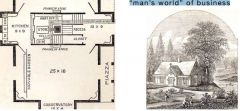
Catherine Beecher |
• national influence • sought to connect domesticideals with architectural design • offered practical plans • argued for separation of“women’s world” of home and“man’s world” of business |
|

Andrew Jackson Downing |
• most influential architectural critic • translated rural ideal into asuburban ideal • offered practical plans • proposed civic center of communitywith natural park • pattern books of plans |
|
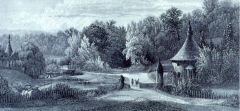
Alexander Jackson Davis,Llewellyn Park, New Jersey,1850’s |
• promoted the “villa”instead of the attached rowhouse • set aside surrounding landas pleasure-ground, forrecreation and enjoyment asopposed to profit • House redefined as a placewith a yard • Individual house symbol ofmiddle-class success/achievement |
|

|
• First designed development around a park, the “Ramble” • Exclusively residential- no commercial, retail, industrial • First deed restrictions • First gated community • First design using curvilinear roads • Introduced idea that landscape architecture could beplanned around a grouping of houses, not just for theindividual family |
|
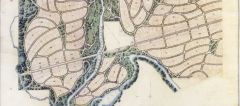
|
Riverside , Olmstead and Vaux, 1868 • set on rail line from Chicago • larger, wider lots than typical • houses set back from street • organic grid pattern: curved roadssuggested “happy tranquility” • integrated parks • commercial area |
|
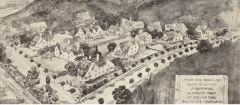
|
Olmstead, Roland Park, Baltimore |
|
|
Beverly Hills |
Influence of HampsteadGarden Suburb and thework of Unwin and Parkerin the pre-war suburbs |
|
|
John Nolen, Mariemont, Ohio, 1923- |
• 650 acres, 3,000people • multiple housing types • commercial/civic towncenter + schools • progressive idealsmarried to naturallandscape |
|
|
Kenneth T. Jackson |
“Indeed the automobile had a greaterspatial and social impact on citiesthan any technological innovationsince the development of the wheel.” |
|
|
The Automobile |
• previously suburbs were along rail lines • now suburbs could spread anywhere • roads subsidized by government (not public transit) • by 1940, 13 million people lived in communities beyond thereach of public transportation • Streetcars declines, rail service declined. • Suburbs dependent on automobiles, which demanded evergrowing space for streets and parking |
|

|
Frank Lloyd Wright, Broadacre City, 1932 |
|
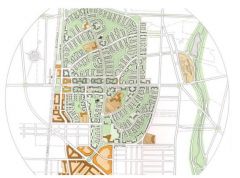
|
Clarence Stein, Radburn, New Jersey 1929 • 470 single family houses • 170 multi-family houses • ‘superblock’ • car relegated to exterior • interior preserves park-like setting |
|

|
Reginald Johnson, Clarence Stein,Village Green, Los Angeles 1941 • “Radburn” idea • 64 acres, 85 buildings, 629 units • built around courts and parklike greens |
|

|
Levittown, NY 1941 • mass production appliedto suburbs • largest housingdevelopment ever • 17,500 houses • 82,000 residents |

